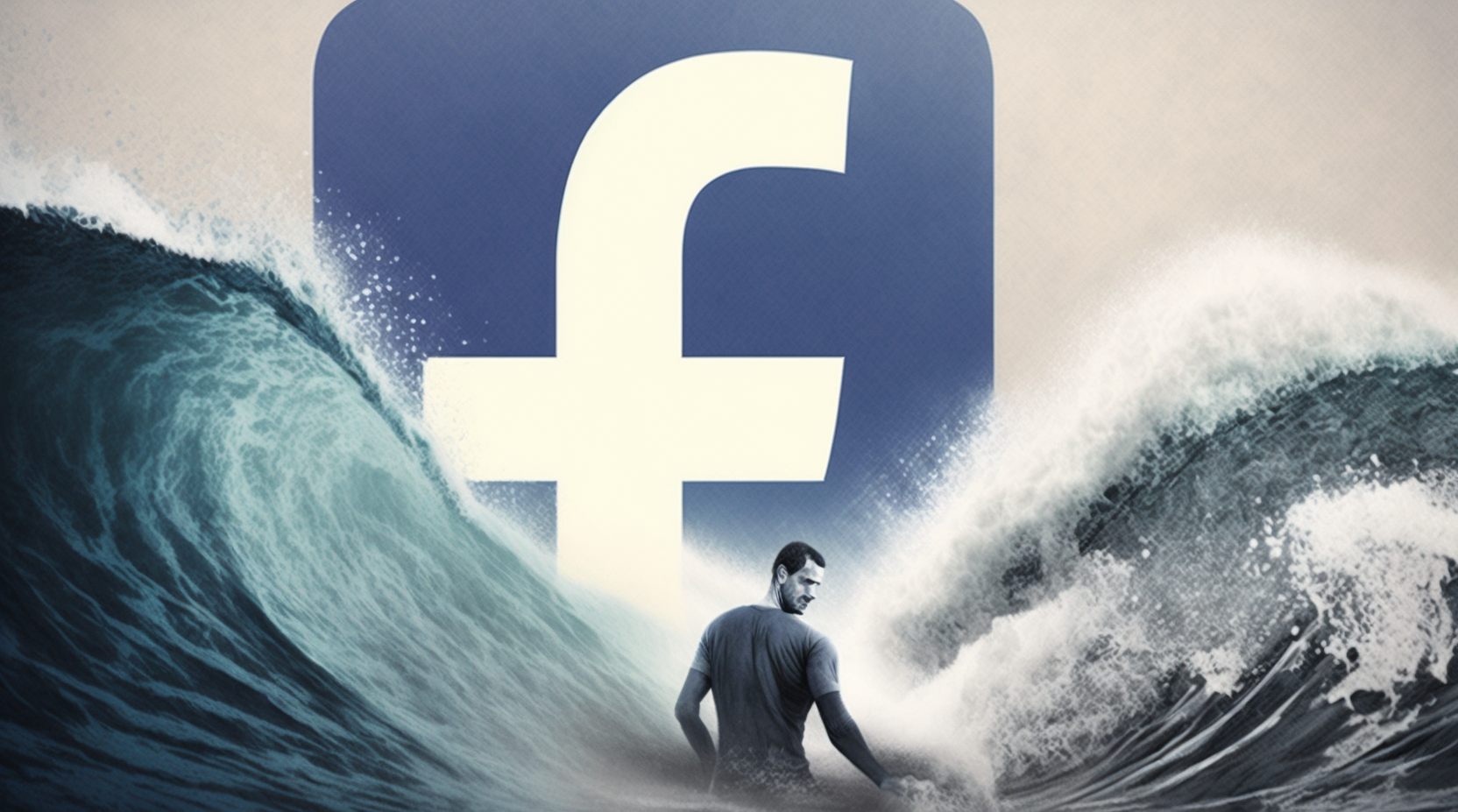
Newsletter
Newsletter
The shuttering of Buzzfeed News isn’t a sign of hurt across the industry. Look to other publishers on how to succeed as the digital media market changes.
21st April 2023

In the Pugpig weekly media bulletin, Pugpig’s consulting services director Kevin Anderson and digital growth consultant James Kember distill some of the best strategies and tactics that are driving growth in audiences, revenue and innovation at media businesses around the world.
Under most circumstances, we would put announcements of layoffs in the industry news links at the end of the Bulletin, but Buzzfeed isn’t just laying off 15% of its workforce, it’s closing its entire news division. More than that, Buzzfeed CEO Jonah Peretti’s announcement caught our attention.
Sign up to get the Media Bulletin in your inbox.
“Our industry is hurting and ready to be reborn,” Peretti said. Peretti holds himself accountable and says that he over-invested in BuzzFeed News. “This made me slow to accept that the big platforms wouldn’t provide the distribution or financial support required to support premium, free journalism purpose-built for social media,” he said.
The problem was one of balance. BuzzFeed’s model left it exposed to market forces that it could not control: the ad cycle which is highly correlated to the economic cycle and being captive to social platforms for traffic, which have their own strategic goals. On that second point, BuzzFeed was in many ways a creation of Facebook, and after 2016, Facebook referrals to news sites began to decline. And as regulators have circled around the duopoly – Facebook and Google, they have started to disengage with journalism. Facebook in particular has been quite public that its news feed was shifting away from highlighting news and other content. Last year, it shut off its news tab. It pulled back from funding journalism initiatives. Its leadership has for many years said that its users were more interested in interacting with each other than reading content shared from publishers.
We don’t do binary thinking here at Pugpig so it’s worth adding some nuance about the platform’s role in audience development based on the data that we see from hundreds of publishers. Amongst social referrals, Facebook still stands head and shoulders above other social networks when it comes to referral traffic. And with that, we can say that while there has been a lot of hand-wringing over Elon Musk’s erratic leadership of Twitter, publishing leaders can rest easy, Twitter does not drive meaningful traffic or subscription conversions for any publisher that we’ve reviewed. When it comes to broad areas of meaningful engagement, Twitter is a single-digit driver at many publishers or a meaningless rounding error for most others. Twitter benefited in mindshare largely because it was a water cooler for journalists and a tool for individual journalists to network and advance their careers more than it was a key pillar of audience development for most content verticals.
Google has been pulling back from its own journalism initiatives and even floated the idea of delisting news in some countries in response to regulatory pressures, but it still drives a lot of traffic to publishers. And moreover, we have seen Google Discover drive significant traffic to some of publishers and even lead to some meaningful conversion numbers.
BuzzFeed also had a branding issue. It’s listicles, quizzes and meme surfing content sat uncomfortably under the same brand as award-winning journalism. After the announcement that BuzzFeed News would be closing, there were several pieces mocking not only its content but also just the sheer level in which it recycled its own ideas. In his book Traffic, former BuzzFeed news editor-in-chief Ben Smith highlights how BuzzFeed ran an almost identical cheese quiz calling on readers to find out what kind of cheese they are in 2014, 2016, 2018, 2019, 2020 and October 2022 and December 2022. Based on your responses, you could be cheddar, gouda or camembert. Ouch.
While Peretti holds himself accountable to a certain extent, he paints a picture of a digital media industry in crisis. We don’t subscribe to this view as it directly contradicts the success that the publishers that we work with are having. We believe that the issue isn’t with the industry but a certain business model that focused on volume over value and that was overly reliant on masses of anonymous users, social referral traffic and low-yield advertising. BuzzFeed’s rise and fall tracks not just with the rise of Facebook but also with the social network’s decline in driving traffic to content providers. As long as Facebook was a firehose of referrals, BuzzFeed thrived and was seen as the future of media. Facebook even subsidised major strategic initiatives at publishers like BuzzFeed, including the now PTSD-inducing pivot to video or 360 videos. Publishers got trapped into trying to capture Facebook’s largesse rather than serving real audience needs.
Facebook has its own woes, and it needs to keep its users captive in its own walled garden rather than sending them elsewhere to feed its own ad business. And now those woes are BuzzFeed’s. In 2016, Facebook’s private valuation was a staggering $1.6 bn. Yesterday’s announcement put its stock in a swoon, and publicly traded BuzzFeed now is only valued at $100m. Vox anxiously speculated about which other former digital media darling might be next to fall on hard times. In the middle of the last decade, you could see Vox, Vice and BuzzFeed all racing to become the media empires of the 21st Century. BuzzFeed is cutting its way to a pivot, and Vice is shopping itself around for a sale, at billions less than it once would have fetched.
How times have changed. While these digital media pioneers and some legacy media groups were racing to become the volume kings, a number of other publishers, many of them working with Pugpig took a different tack. These publishers decided to shift to the value game, and unlike Peretti who stuck to a business model that was of a moment, they have continued to innovate, not just in their editorial formats but also in their business models. And at this point, we think its useful to return to Steward Brand’s full quote about the pricing of information.
Information Wants To Be Free. Information also wants to be expensive. Information wants to be free because it has become so cheap to distribute, copy, and recombine—too cheap to meter. It wants to be expensive because it can be immeasurably valuable to the recipient. That tension will not go away. It leads to endless wrenching debate about price, copyright, ‘intellectual property’, the moral rightness of casual distribution, because each round of new devices makes the tension worse, not better.
Stewart Brand
First publishers like the Wall Street Journal and the Financial Times decided to test what kinds of information want to be expensive, and they found that information that could make people money was expensive, which makes sense. However, beginning around 2010, other publishers started testing if there was a middle point between free, widely available information, and the obviously expensive, market-moving information of financial publishers.
Initially, we lived in a binary world of paywalls, the metered paywall of the New York Times and the hard paywall of the The Times in London, and for a long time, the metered paywall was one of adjustment, dialling the paywall up and down to capture value from superfans while balancing it with advertising revenue from more lightly engaged audiences. While former digital darlings like BuzzFeed and Vice failed to meaningfully innovate their businesses, there has been an explosion of experimentation amongst the next generation of digital publishers and a lot of legacy media brands, supported by data and product thinking and management.
Now, we’re in a period where media is evolving to meet the ongoing challenges of an ever changing digital media market. Publishers are diversifying their revenue streams. They are adding increasing sophistication to their reader revenue models, shifting from the binary world of subscribers and non-subscribers to the much richer model of anonymous to known, allowing them to capture revenue across a broad range of engagement. And more sophisticated registration and subscription tools are allowing them to dynamically offer the right subscription product to different cohorts of consumers, and finally organisations like the New York Times are rebuilding multi-product content businesses that had been disaggregated in the early phase of digital disruption. And we are seeing success at every level of the industry from local to international.
Yes, there are parts of the media and publishing industry that are under strain. It always happens when the economic outlook becomes more uncertain. While five years ago, the playbooks were still being written on how publishers could transform their business digitally, now we have enough examples of success of successful strategies and tactics to build a successful media business during turbulent times. Times of great change require media leaders and their teams to be nimble, which requires a culture of experimentation that can de-risk innovation choices and scale successful initiatives. BuzzFeed is not a sign that digital media is dead but that innovation is a constant journey of re-invention that requires leaders and their teams to adapt to consumers’ needs and market conditions. BuzzFeed road the social media wave through its first explosive wave of growth, but Peretti failed to adapt when that wave broke. Other publishers, digital natives and legacy giants, are seizing success by meeting the challenge of change by becoming dynamic companies able to apply innovation and agility to their editorial and business operations.
An example of this agility is the ability to change focus on different stages of the conversion funnel. As we mentioned in this bulletin back in January publishers are becoming ever more aware of the importance of retention, with it being the top strategic priority for 68% of brands according to a report from FT Strategies. This has combined with the growing evidence that if a publisher is to retain a user then offering a good product by itself is often not enough, they need to make sure the user engages with it. This is where onboarding comes in.
For the Washington Post’s Head of Lifecycle Marketing, Anjali Iyer, “retention begins the moment a consumer expresses interest and becomes a subscriber” and to achieve this they’ve built an onboarding journey integrated into the subscription journey. However, onboarding isn’t anything new and the Post themselves have been doing it for years. Their old approach was to send a single email at the point of subscription. This included several subscription benefits, but as a single communication its impact was limited. They’ve now developed their approach to include multiple, personalised emails sent over several months and have aligned it to three guiding principles:
The first step is carried out online, where the user can select their interests, time of day, newsletter recommendation and download the app immediately after subscribing. A welcome email follows thanking them for joining and providing a brief overview of the benefits of a subscription. This email also includes links to useful resources such as the Post’s app and the publication’s social media accounts.
As the email series continue, automated journey monitoring technology checks what steps have been completed and prompts subscribers with targeted emails if they haven’t completed an action. They also highlight content from across the Post and offer further information on benefits like live events, article gifting and podcasts.
The results so far have been encouraging with the Post reporting a 2% lift in retention and an increase in three-year CLV after 12 weeks.
Iyer’s approach builds upon many good examples in the industry and The Audiencers’ review of The Economist, The Telegraph, The Times online journeys is worth a read if you’d like to see further examples of online onboarding. Also, it’s worth noting that whilst the focus of the Post is on subscription onboarding, at Pugpig we have been working with clients to build post-registration onboarding journeys as well. In last week’s media bulletin we wrote about the importance of a registration wall and how it should be a key part a publishers subscription strategy. We specifically mentioned that onboarding for registered users should follow the same approaches to subscription onboarding and the benefits are clear: It will increase the conversion rate.
Pugpig’s Consulting Services team is helping our publishing partners to develop onboarding strategies. If you would like to discuss how we can help you, contact us at info@pugpig.com.
Correction: Anjali Iyer was originally credited as the Head of Lifecycle Marketing at the Wall Street Journal, but she holds that role at the Washington Post.
Here are some of the most important headlines about the business of news and publishing as well as strategies and tactics in product management, analytics and audience engagement.

Newsletter

Newsletter

Newsletter

Newsletter

Newsletter